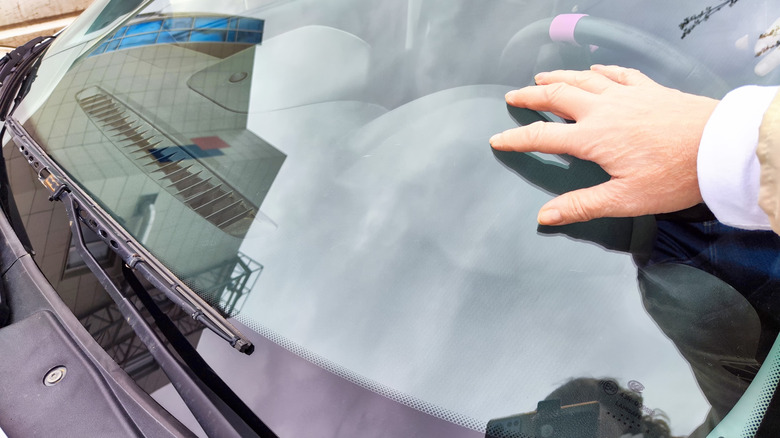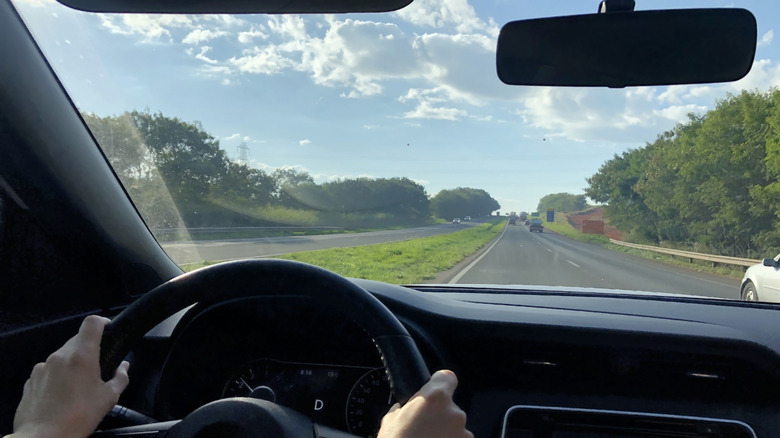Those Black Dots On Your Windshield Are More Important Than You Think
If you've ever found yourself absentmindedly staring out your windshield while stuck in traffic or patiently sitting in your car during an oil change, maybe you've noticed those black dots clustered along the edges of the glass. Have you ever wondered why they're there? Are they purely decorative, or are they one of those everyday things you never knew the purpose of?
While those little dots may seem insignificant, they actually serve a very important role. The tinted black band bordering the windshield (accompanied by that curious sprinkling of black dots) is called a frit. Made of black enamel-based paint that's baked into the glass, the main function of a frit is to keep your windshield securely locked in place. During installation, a thick coating of urethane sealant is applied to hold the glass inside the frame. Frits give the sealant something to stick to. Without them, the glass could pop out of the frame, and you wouldn't have a windshield to absentmindedly stare through to begin with.
Frits keep your windshield from going on the fritz
Frits serve more than one purpose. In addition to holding the glass to the adhesive, they also protect it from direct sunlight. Have you ever noticed that the dots are always black? No, it's not purely an aesthetic choice. The black tint allows the dots to effectively combat harsh UV rays. Otherwise, the glue that holds the glass and frame together is at risk of melting, which would compromise its ability to hold the windshield in place.
The dotted pattern also plays an important role in the manufacturing stage of the windshield. As a Pittsburgh Glass Works engineer explained to Jalopnik, in order to mold the windshield into its necessary curved shape, the glass is warmed in a hot oven to make it easier to bend. Since the frits are black in color, they heat up faster than the rest of the screen, which can cause unwanted distortions. The gradient pattern of the dots encourages a more even heat distribution, which in turn prevents the glass from being improperly molded. In addition to their functional purpose, frits offer a certain visual appeal as well, hiding the unsightly glue to give the edges of the windshield a more polished look.
Do all windshields have frits?
Unlike some innovative vehicle ideas that immediately failed, the don of the dots proved to be a long-enduring invention, as you likely won't find a modern car windshield without them. Prior to the 1950s, automobile manufacturers used gaskets lined with metal trim to secure the windshield and keep water from getting inside the vehicle. During the 1950s and 1960s, they made the transition from gaskets to glue, prompting the creation of frits to hold the windshield in place. Nowadays, it's rare to find a frit-free windshield, unless you're looking at a classic car made before the mid-century.
If you drive a modern car, you may have noticed another patch of black dots behind your rear-view mirror. These aren't just for show either. Known as the "third visor frit," these dots are crucial in shielding the sun from the space between the two sun visors in your car. So, there you have it. The next time you're cruising down the highway, you can thank those small but mighty dots for keeping your windshield from popping out and shattering on the pavement.


